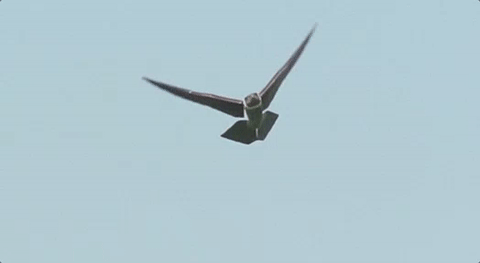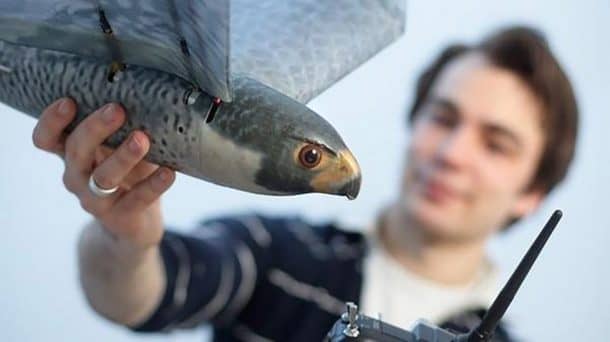This month will mark the first UAV in the world to patrol the International airports, where a falcon looking winged-bot will scare off the birds from runways. Robird will create the illusion of a real falcon on the hunt by realistically flapping its wings and will patrol the Edmonton International Airport, Canada, daily. The launch of the Falcon looking UAV was a countermeasure to the hazard posed by birds to the planes during landing and taking off. The Robird will drive out the flocks of birds such as Seagulls and Canadian Geese.
“The last thing airports and airlines want are for birds to down a plane and put people in harm’s way,” says Jordan Cicoria.
Jordan Cicoria is the co-founder and managing director of Aerium Analytics (AERIUM), which is the Calgary-based company that operates the Robird, along with other drones that survey and map the landscapes of airports.

Federal Aviation Administration (FAA) has reported destruction of 247 aircraft and loss of 262 lives that occurred due to wildlife strikes between 1988 and 2015. Whereas in 2015, there were 13,795 reports of wildlife strikes, among which birds caused 96% of the damage. The property damage costs the company $299 million in revenue and repairs. One such famous incident happened to flight 1549, on 15th of January, 2009. The 2016 Movie, Sully was based on the event, starring Tom Hanks.

Other countermeasures that have been taken so far to drive the birds away include noisemakers, such as firing the propane cannon, aircraft with a built-in lighting system that detects the birds, dogs trained to chase them away, installation of floating balls in and forcing fish away from local ponds to deter birds away. The airport authorities encourage falconers to bring peregrine falcons and Harris’s hawks trained to discourage birds. The migrating birds make the challenges harder.
Nico Nijenhuis came up with the idea of Robird during his studies at the Technical University of Twente, Netherlands, in applied physics and fluid dynamics, 14 years ago. Nico is now the CEO of Clear Flight Solutions. The UAV avian was used to scare the birds away from blueberry fields and landfills. The idea was to avoid the nesting of birds on cargo containers in shipping ports, oil, and gas platforms located offshore. The Robird will serve the airports, however, for the very first time.

“To now officially start integrating our operations at a major Canadian airport is absolutely fantastic,” Nijenhuis said in a press statement.
The Robird can stay in flight for 15 minutes to cover over 2 kilometers or 1.5 miles and weighs around 700 grams or 1.5 pounds.
“In order to be effective, it had to look as close to a bird’s natural predator as possible. Birds respond to the silhouette of whatever is flying in the air, and they respond to the flapping. By mimicking that, you make it much more effective.” said Cicoria.
The airport regulations dictated that Robird will be flown with the assistance of 2 pilots, one for the remote handheld controller and the other to coordinate with the air traffic controller to avoid any collisions with the planes.
The Robird is programmed to send wireless signals to the operator, where it can be made to set a real time 3-dimensional boundary using a technique called ‘geofencing’. If the boundary is breached, the Robird will switch to autopilot and return to the base automatically. The Robird will patrol the Edmonton International Airport premises of 7,000 Acres or 2,833 Hectares of land, marking its territory. The purpose is to keep people and aircraft safe, as well as to save birds from themselves.
Credits: How stuff works



